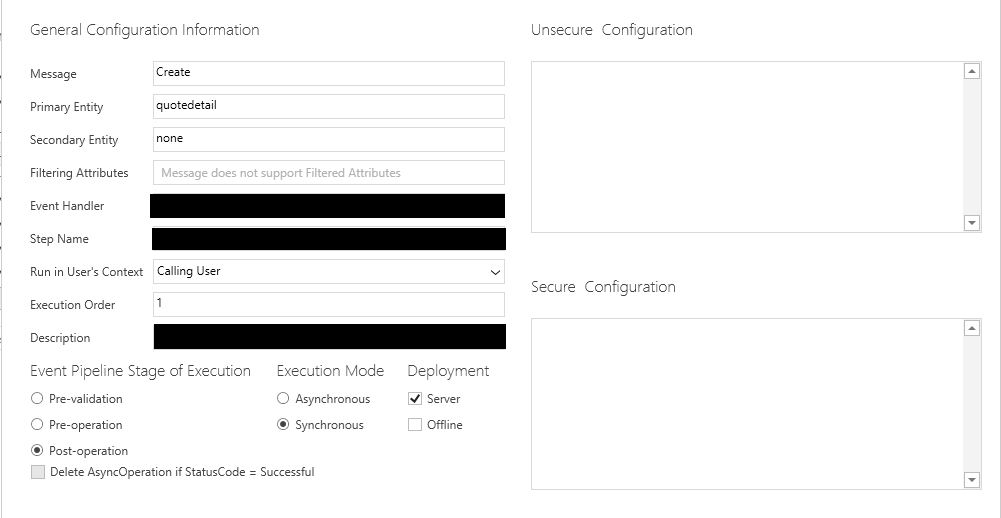Generally, when you are looking at adopting Dynamics CRM/Dynamics 365 for Enterprise (D365E) within your business, you can be reasonably satisfied that the majority of what is already configured within the system can be very quickly adapted to suit your business needs. Whether it’s the Lead to Opportunity sales process or the entire Case management module, the functionality at your disposal is suitable for many organisations across the globe. The great thing as well is that, should you wish to fine-tune things further, you have a broad range of options at your disposal that can help you achieve your objectives - sometimes in very specific and highly unique ways. I have previously looked at a good example of this on the blog - namely, how to override the systems built-in pricing engine in favour of your own - and, assuming you have a good understanding of C# and how to deploy plugins to the application, you can spin an important aspect of the systems functionality on its head to match how your business operates.
Having this ability is, undoubtedly, a real boon, but can present some odd behaviours. For example, you may start to notice that suddenly the Extended Amount field is no longer being populated with data after implementing your custom pricing engine. The example pictures below demonstrate a before and after example of adding a Product line item to the Quote entity, using the exact same sample Product:
The odd thing about this is that, as soon as you click into the record, you will suddenly see a value appear in this field. Very strange!
It is difficult to pinpoint exactly what is causing the problem, but I can do a “stab in the dark”. CRM/D365E uses the CalculatePrice message to determine the points when either a) the default price engine or b) a custom one is triggered to perform all necessary calculations. Although there is no official documentation to back this up, I suspect that this message is only triggered when you Update or Retrieve an existing Product line item record (regardless of whether it is an Opportunity Product, Quote Product etc.). This is proven by the fact that, as soon as we click into our Product record, the Extended Amount field is suddenly populated - the platform has triggered the Retrieve message as a result of you opening the record and then, as a next step, forces the CalculatePrice message to also fire. The important thing to clarify with this point is that you must have a custom pricing implemented successfully within the application for this to work. Otherwise, don’t be too surprised if the Extended Amount value remains at 0.
Whilst the workaround for this is somewhat tolerable if you are working with a small subset of records and do not rely on the Extended Amount as part of any existing reporting within the application, this could really start to cause problems for your end users in the long term and give an impression that the application does not “work” as it should do. Fortunately, there is a solution that we can look at implementing that will hopefully lead to some happy fingers from not needing to click into records anymore 🙂 Be sure to have the CRM/D365E SDK handy before you begin the below!
- Open up the Plugin Registration Tool from within the SDK, and log into your CRM/D365E instance.
- Scroll down to your Assembly and Plugin that contains your custom pricing engine. If already configured correctly, it should have a step configured for the CalculatePrice message on any entity, as a Synchronous, Post-Operation step.
- Right click your plugin and click on Register New Step to open the window that lets you specify the required settings for your step. Populate the form as follows:
- Message: Create
- Primary Entity: Select one of the Product line item entities that your custom pricing engine uses. The list of accepted entities are invoicedetail, opportunityproduct, salesorderdetail or quotedetail.
- Event Pipeline Stage of Execution: Post-Operation
- Execution Mode: Synchronous
All other settings can be left as default. Your window should look similar to the below if configured correctly for the quotedetail entity:
- Click on Register New Step to add the step to the application.
- Repeat steps 3-4 for any additional Product line item entities that are using with your custom pricing engine
Now, when you go back into CRM/D36E, the Extended Amount values will start to be populated automatically as soon as you add a new Product onto the Product line item subgrid.
Conclusions or Wot I Think
Whilst the ability to override an important piece of CRM’s/D365E’s functionality is welcome, you do need to bear in mind the additional overhead and responsibility this leaves your organisation in ensuring that your custom pricing engine is correct and that you have adequately tested the solution to properly identify actions which are out of the ordinary, such as the one discussed in this post. What is slightly frustrating about this quirk, in particular, is the lack of clear documentation regarding the CalculatePrice message from Microsoft. Granted, the message is only exposed for minimal interaction from an SDK point of view and is, for all intents and purposes, an internal application message that we shouldn’t really mess with or care about. Having said this, even just a brief summary of when the message is triggered on the platform would have made it instantly more understandable why any custom pricing calculation engine will fail to provide you with an instant amount within your Extended Amount field. In the end, however, I am pleased that there is a straightforward workaround that can be put into place to ensure that things work as expected; hopefully to the extent that it becomes virtually impossible to determine easily whether your organisation is using the default or a custom pricing engine in the first place.



